Changes in Water Quality of the River das Antas as It Passes through Rural and Urban Areas
Abstract
:1. Introduction
2. Materials and Methods
2.1. Study Area
2.2. Water Sampling and Analysis
2.3. Data Analysis
3. Results
3.1. Turbidity
3.2. Concentration of Sediments
3.3. Water Acidity (pH)
3.4. Temporal Patterns by Month
4. Discussion
5. Conclusions—Policy Implications
Author Contributions
Funding
Institutional Review Board Statement
Informed Consent Statement
Data Availability Statement
Acknowledgments
Conflicts of Interest
References
- Rudek, C.M. A Cultura Ucraniana e Polonesa em Irati; Gráfica Darte: Irati, Brazil, 2002. [Google Scholar]
- Orreda, J.M. História de Irati; Edipar: Route Jarzé, France, 2006. [Google Scholar]
- Rocha de Freitas, A. Identificação de áreas potencializadoras de inundações e enxurradas: Uma proposta metodológica aplicada na Bacia Arroio dos Pereiras, Irati PR. Ph.D. Thesis, Universidade Estadual de Ponta Grossa, Ponta Grossa, Brazil, 2018; p. 150. [Google Scholar]
- Prefeitura de Irati. Plano Diretor Municipal de Irati; Prefeitura de Irati: Irati, Brazil, 2010. [Google Scholar]
- Braga Moruzzi, R.; Braga, R.; Lupinaccida Cunha, C.M. Proposta de roteiro para coleta de dados visando diagnóstico da drenagem urbana em planos diretores municipais. Ambiência 2009, 5, 523–536. [Google Scholar]
- Governo Federal do Brasil. Lei n° 7.803, de 18 de Julho de 1989. Available online: http://www.planalto.gov.br/ccivil_03/leis/l7803.htm (accessed on 20 December 2020).
- Venancio, D.L.; Costa de Oliveira Filho, P.; Disperati, A.A. Uso do geoprocessamento em estudo ambiental na bacia hidrográfica do rio das Antas, Irati (Paraná). Ambiência 2010, 6, 135–146. [Google Scholar]
- Ribeiro de Andrade, A.; Felchak, I.M. A poluição urbana e o impacto na qualidade da água do Rio das Antas-Irati/PR. Geoambiente Line 2009, 12, 1–25. [Google Scholar]
- Tomazzoni Lubenow, A.; Costa de Oliveira Filho, P.C.; Magno de Sousa Vidal, C.; Soares Cavallini, G.; Caldeira Canterle, Y. Impacto do uso e ocupação da terra na qualidade da água da bacia hidrográfica do rio Nhapindazal, Irati (PR). Ambiência 2012, 8, 845–858. [Google Scholar] [CrossRef]
- Rodrigo-Comino, J.; López-Vicente, M.; Kumar, V.; Rodríguez-Seijo, A.; Valkó, O.; Rojas, C.; Pourghasemi, H.R.; Salvati, L.; Bakr, N.; Vaudour, E.; et al. Soil Science challenges in a new era: A transdisciplinary overview of relevant topics. Air Soil Water Res. 2020, 13, 1178622120977491. [Google Scholar] [CrossRef]
- Genxu, W.; Haiyan, M.; Ju, Q.; Juan, C. Impact of land use changes on soil carbon, nitrogen and phosphorus and water pollution in an arid region of northwest China. Soil Use Manag. 2004, 20, 32–39. [Google Scholar] [CrossRef]
- Wijesiri, B.; Deilami, K.; Goonetilleke, A. Evaluating the relationship between temporal changes in land use and resulting water quality. Environ. Pollut. 2018, 234, 480–486. [Google Scholar] [CrossRef]
- Tudela Haberland, N.; Berger Silva, F.C.; Costa Oliveira Filho, P.; Magno de Sousa Vidal, C.; Soares Cavallin, G. Análise da influência antrópica na qualidade da água do trecho urbano do Rio das Antas na cidade de Irati, Paraná. Rev. Tecnológica 2012, 21, 53–67. [Google Scholar]
- Milani, E.J.; Zalán, P.V. An outline of the geology and petroleum systems of the Paleozoic interior basins of South America. Int. Union Geol. Sci. 1999, 22, 199–205. [Google Scholar] [CrossRef] [Green Version]
- Carvalho, N.O. Hidrossedimentologia Prática; CPRM: Rio de Janeiro, Brazil, 1994. [Google Scholar]
- Palhares, J.C.P.; Ramos, C.; Klein, J.B.; de Lima, J.; Muller, S.; Cestonaro, T. Medição da Vazão em Rios Pelo Método do Flutuador; EMBRAPA Suínos e Aves-Comunicado Técnico (INFOTECA-E): Concórdia, Brazil, 2007. [Google Scholar]
- Lawler, D.M. Spectrophotometry: Turbidimetry and nephelometry. In Encyclopedia of Analytical Science, 2nd ed.; Elsevier: Amsterdam, The Netherlands, 2005; pp. 343–351. [Google Scholar]
- Rainwater, F.H.; Thatcher, L.L. Methods for Collection and Analysis of Water Samples; US Government Printing Office: Washington, DC, USA, 1960.
- Claessen, M.E.C. Manual de Métodos de Análise de Solo; EMBRAPA Solos: Rio de Janeiro, Brazil, 1997. [Google Scholar]
- Hanna Instruments. Instruction Manual HI 93703 Portable Microprocessor Turbidity Meter; Sarmeola di Rubano: Padova, Italy, 1998. [Google Scholar]
- Fundação Nacional de Saúde. Manual Prático de Análise de Água; FUNASA: Brasília, Brazil, 2004. [Google Scholar]
- Statsoft. Statistica 6.0. Statistic for Windows; Statsoft: Tulsa, OK, USA, 2001. [Google Scholar]
- Gatica, E.A.; Almeida, C.A.; Mallea, M.A.; Del Corigliano, M.C.; González, P. Water quality assessment, by statistical analysis, on rural and urban areas of Chocancharava River (Río Cuarto), Córdoba, Argentina. Environ. Monit. Assess. 2012, 184, 7257–7274. [Google Scholar] [CrossRef]
- AlBakri, D.; Rahman, S.; Bowling, L. Sources and management of urban stormwater pollution in rural catchments, Australia. J. Hydrol. 2008, 356, 299–311. [Google Scholar] [CrossRef]
- Sargaonkar, A.; Deshpande, V. Development of an overall index of pollution for surface water based on a general classification scheme in Indian context. Environ. Monit. Assess. 2003, 89, 43–67. [Google Scholar] [CrossRef] [PubMed]
- Shukla, S.; Gedam, S.; Khire, M.V. Implications of demographic changes and land transformations on surface water quality of rural and urban subbasins of Upper Bhima River basin, Maharashtra, India. Environ. Dev. Sustain. 2020, 22, 129–171. [Google Scholar] [CrossRef]
- Harris, J.; Humphrey, C.; O’Driscoll, M. Transport of indicator microorganisms from an on site waste water system to adjacent stream. Univers. J. Environ. Res. Technol. 2013, 3, 423–426. [Google Scholar]
- Brandes, M. Characteristics of effluents from gray and black water septic tanks. J. Water Pollut. Control. Fed. 1978, 2547–2559. [Google Scholar]
- Richards, S.; Paterson, E.; Withers, P.J.; Stutter, M. Septic tank discharges as multi-pollutant hotspots in catchments. Sci. Total Environ. 2016, 542, 854–863. [Google Scholar] [CrossRef] [PubMed]
- Vinten, A.; Lewis, D.; Fenlon, D.; Leach, K.; Howard, R.; Svoboda, I.; Ogden, I. Fate of Escherichia coli and Escherichia coli O157 in soils and drainage water following cattle slurry application at 3 sites in southern Scotland. Soil Use Manag. 2002, 18, 223–231. [Google Scholar] [CrossRef]
- Wang, J.; Da, L.; Song, K.; Li, B.-L. Temporal variations of surface water quality in urban, suburban and rural areas during rapid urbanization in Shanghai, China. Environ. Pollut. 2008, 152, 387–393. [Google Scholar] [CrossRef]
- Mouri, G.; Takizawa, S.; Oki, T. Spatial and temporal variation in nutrient parameters in streamwater in a rural-urban catchment, Shikoku, Japan: Effects of land cover and human impact. J. Environ. Manag. 2011, 92, 1837–1848. [Google Scholar] [CrossRef] [PubMed]
- McGrane, S.J.; Hutchins, M.G.; Miller, J.D.; Bussi, G.; Kjeldsen, T.R.; Loewenthal, M. During a winter of storms in a small UK catchment, hydrology and water quality responses follow a clear rural-urban gradient. J. Hydrol. 2017, 545, 463–477. [Google Scholar] [CrossRef] [Green Version]
- Fearnside, P.M. Soybean cultivation as a threat to the environment in Brazil. Environ. Conserv. 2001, 23–38. [Google Scholar] [CrossRef] [Green Version]
- Carmello, V.; Santanna Neto, J.L. Rainfall variability and soybean yield in Paraná State, Southern Brazil. Int. J. Environ. Agric. Res. 2016, 2, 86–97. [Google Scholar]
- Franchini, J.C.; Balbinot Junior, A.A.; Sichieri, F.R.; Debiasi, H.; Conte, O. Yield of soybean, pasture and wood in integrated crop-livestock-forest system in Northwestern Paraná state, Brazil. Rev. Ciência Agronômica 2014, 45, 1006–1013. [Google Scholar] [CrossRef] [Green Version]
- Antoneli, V.; Mosele, A.C.; Bednarz, J.A.; Pulido-Fernández, M.; Lozano-Parra, J.; Keesstra, S.D.; Rodrigo-Comino, J. Effects of applying liquid swine manure on soil quality and yield production in tropical soybean crops (Paraná, Brazil). Sustainability 2019, 11, 3898. [Google Scholar] [CrossRef] [Green Version]
- Vieira Sutilde Oliveira Roesler, P.; Damasceno Gomes, S.; Moro, E.; Barbosa Kummer, A.C.; Pascoli Cereda, M. Yield and quality of roots of sweet potato cultivars in the western region of Paraná. Acta Sci. Agron. 2008, 30, 117–122. [Google Scholar]
- Thomaz, E.; Antoneli, V. Long-term soil quality decline due to the conventional tobacco tillage in Southern Brazil. Arch. Agron. Soil Sci. 2020. [Google Scholar] [CrossRef]
- Antoneli, V.; Lenatorvicz, H.H.; Bednarz, J.A.; Pulido-Fernández, M.; Brevik, E.C.; Cerdà, A.; Rodrigo-Comino, J. Rainfall and land management effects on erosion and soil properties in traditional Brazilian tobacco plantations. Hydrol. Sci. J. 2018, 63, 1008–1019. [Google Scholar] [CrossRef]
- Campos, J.B.; Souza, M.C.D. Arboreous vegetation of an alluvial riparian forest and their soil relations: Porto Rico Island, Paraná River, Brazil. Braz. Arch. Biol. Technol. 2002, 45, 137–149. [Google Scholar] [CrossRef] [Green Version]
- Costa Filho, L.V.d.; Nanni, M.R.; Campos, J.B. Floristic and phytosociological description of a riparian forest and the relationship with the edaphic environment in Caiuá Ecological Station-Paraná-Brazil. Braz. Arch. Biol. Technol. 2006, 49, 785–798. [Google Scholar] [CrossRef]
- de Andrade, J.; Sanquetta, C.R.; Ugaya, C. Identificação de áreas prioritárias para recuperação da mata ciliar na UHE Salto Caxias. Espaço Energia 2005, 3, 1–8. [Google Scholar]
- Quinteiro, T.; Lopes, J.; Martins, I.C.F. Diversidade de Carabidae (Coleoptera) amostra dos em áreas de reflorestamento de mata ciliar e fragmento florestal, no Estado do Paraná. Entomo Brasilis 2012, 5, 217–222. [Google Scholar]
- Araújo, J.A. O Programa Mata Ciliar no Estado do Paraná; Universidade Tecnológica Federal do Paraná: Pato Branco, Brazil, 2014. [Google Scholar]
- Peres, M.C.A.P.; Ralisch, R.; Ripol, C.V. Avaliação do programa estadual “MataCiliar” no município de Pitangueiras, Paraná. Semin. Ciências Agrárias 2009, 30, 563–573. [Google Scholar] [CrossRef] [Green Version]
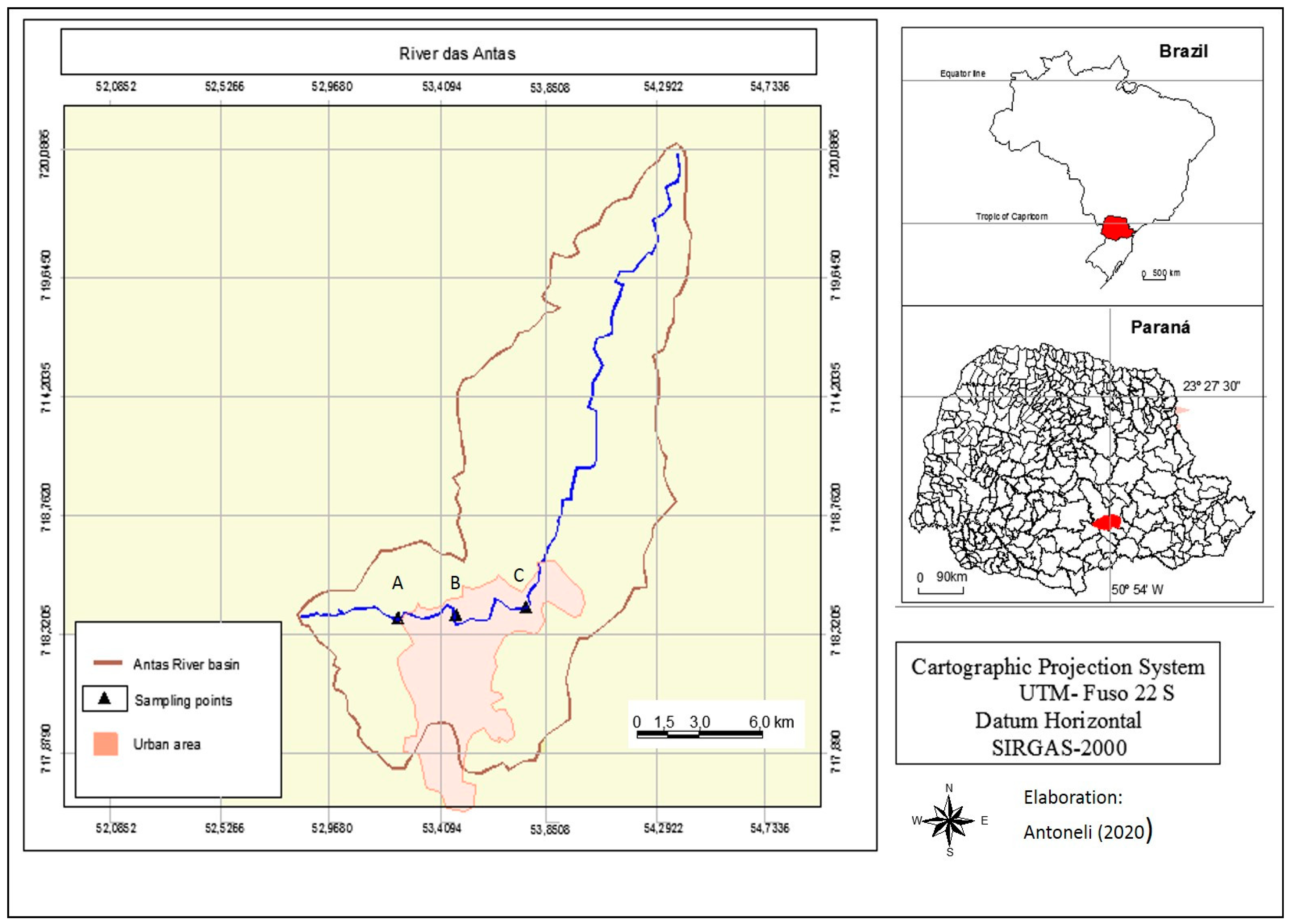

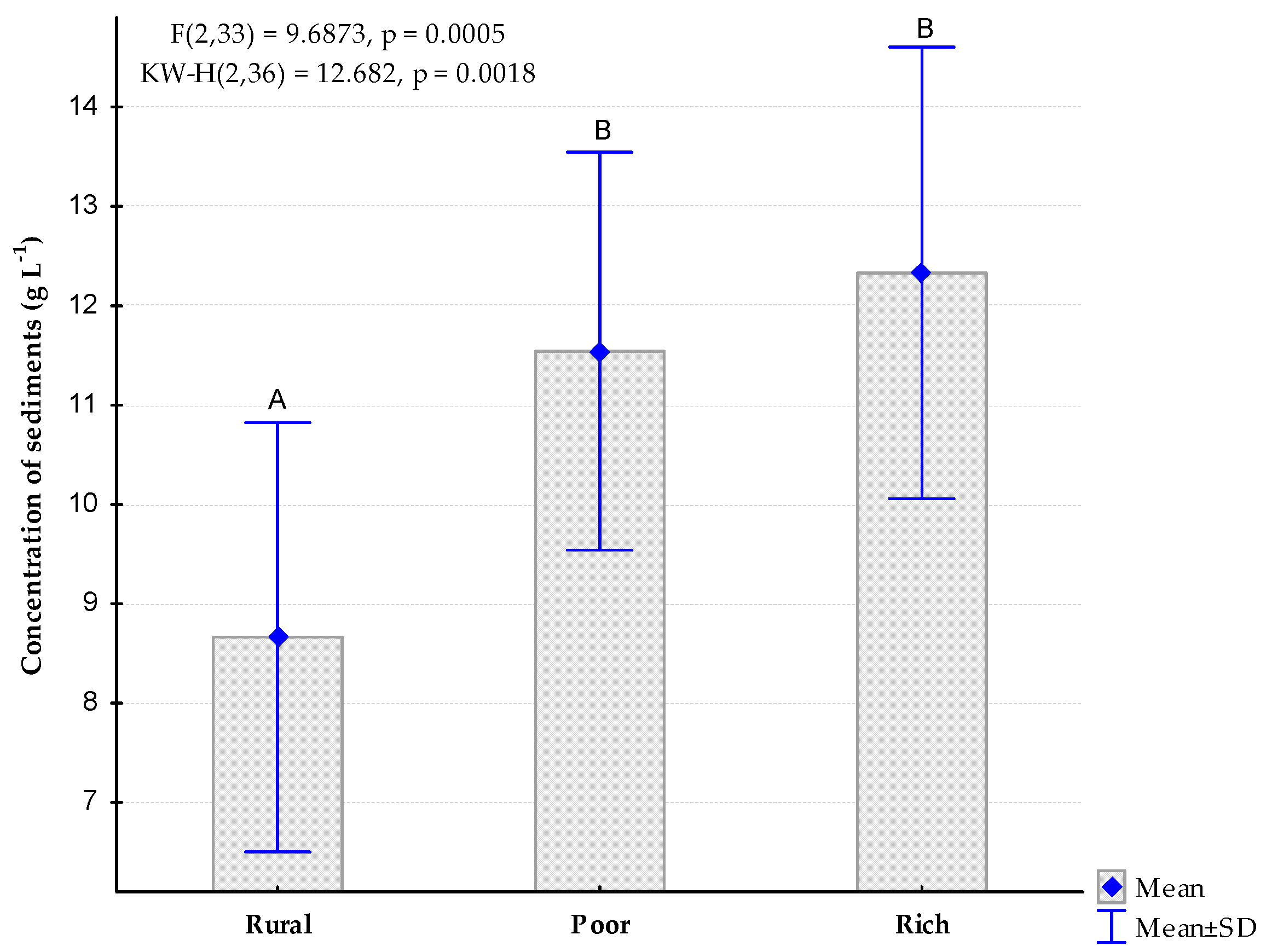
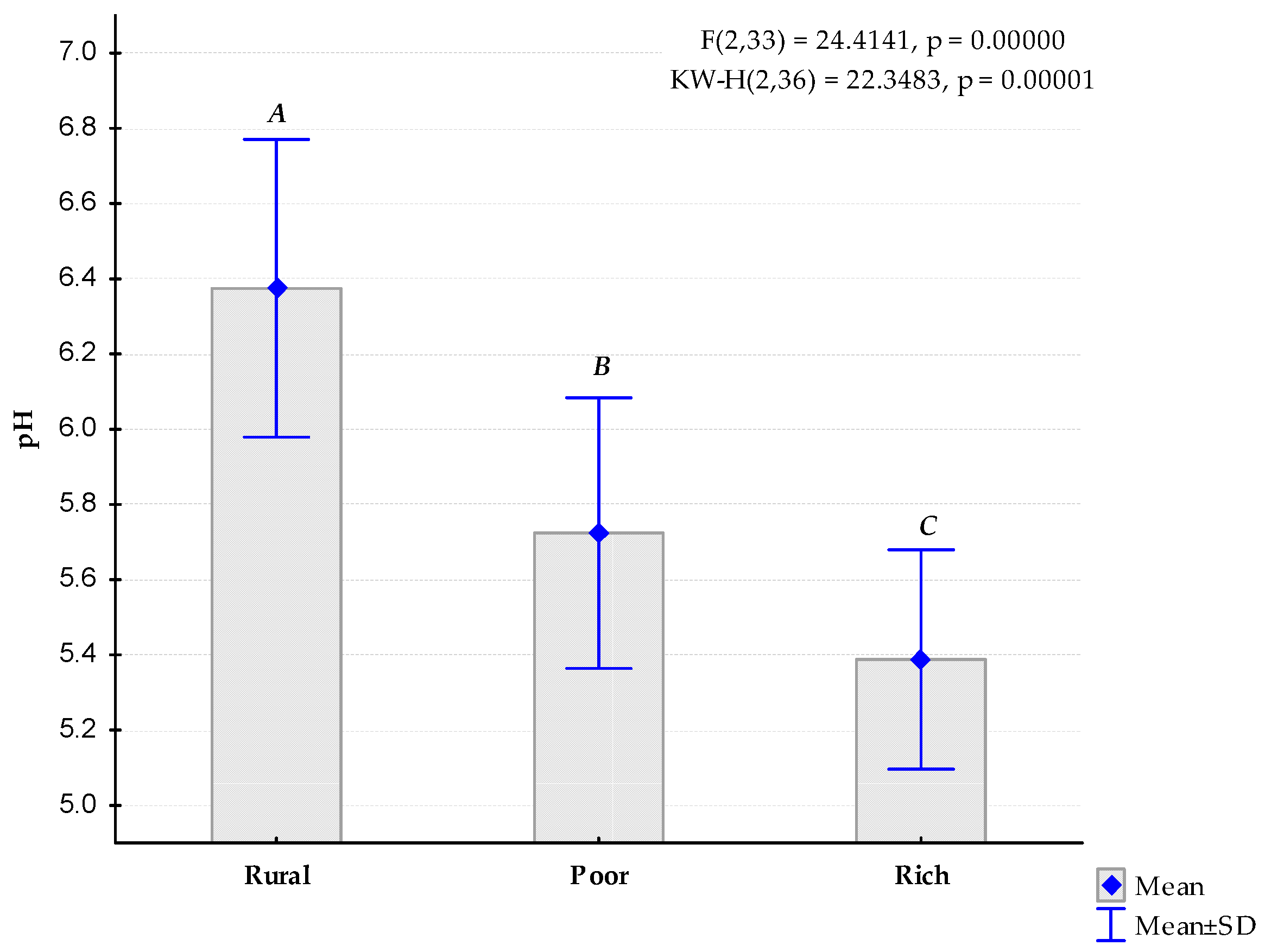
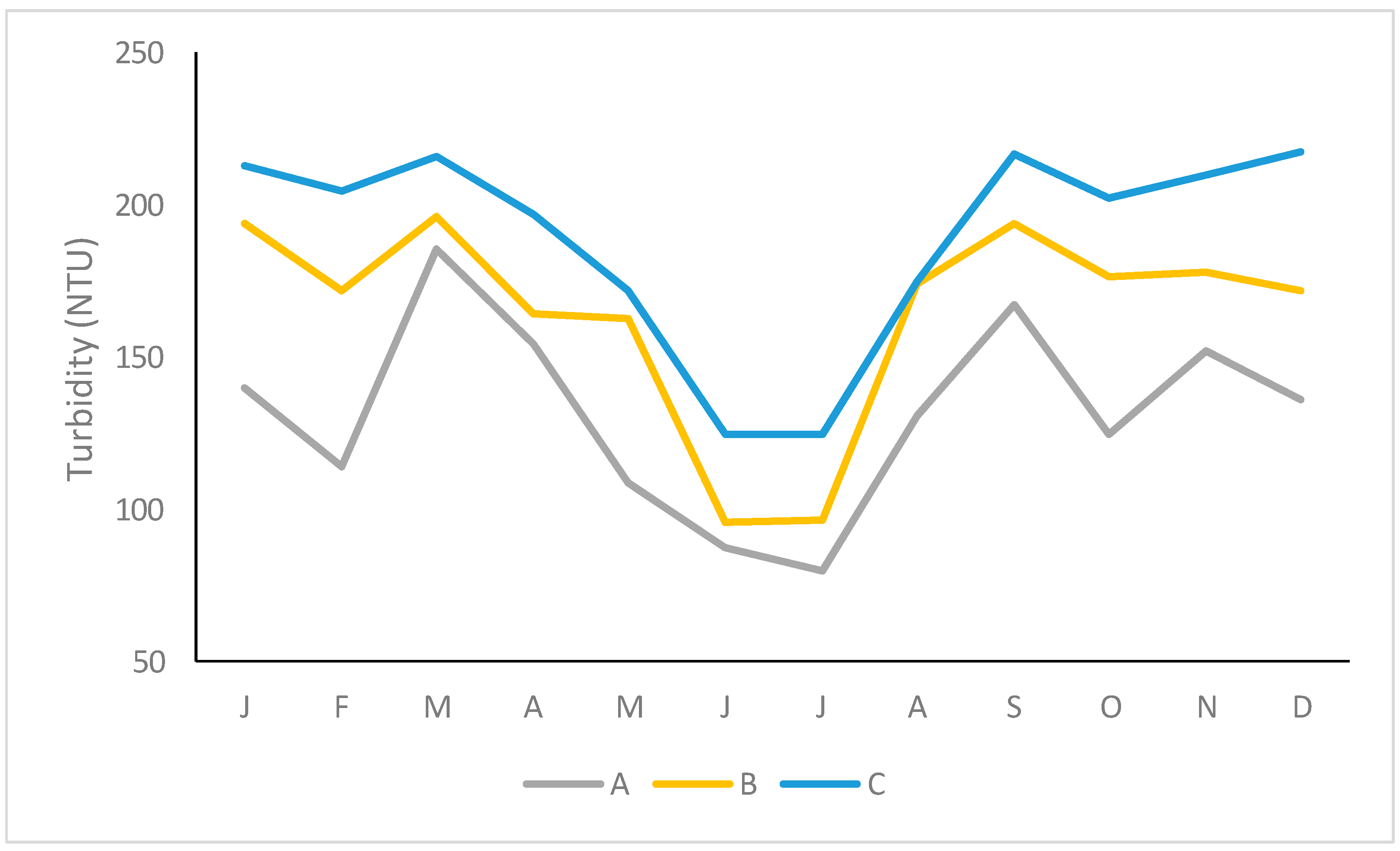
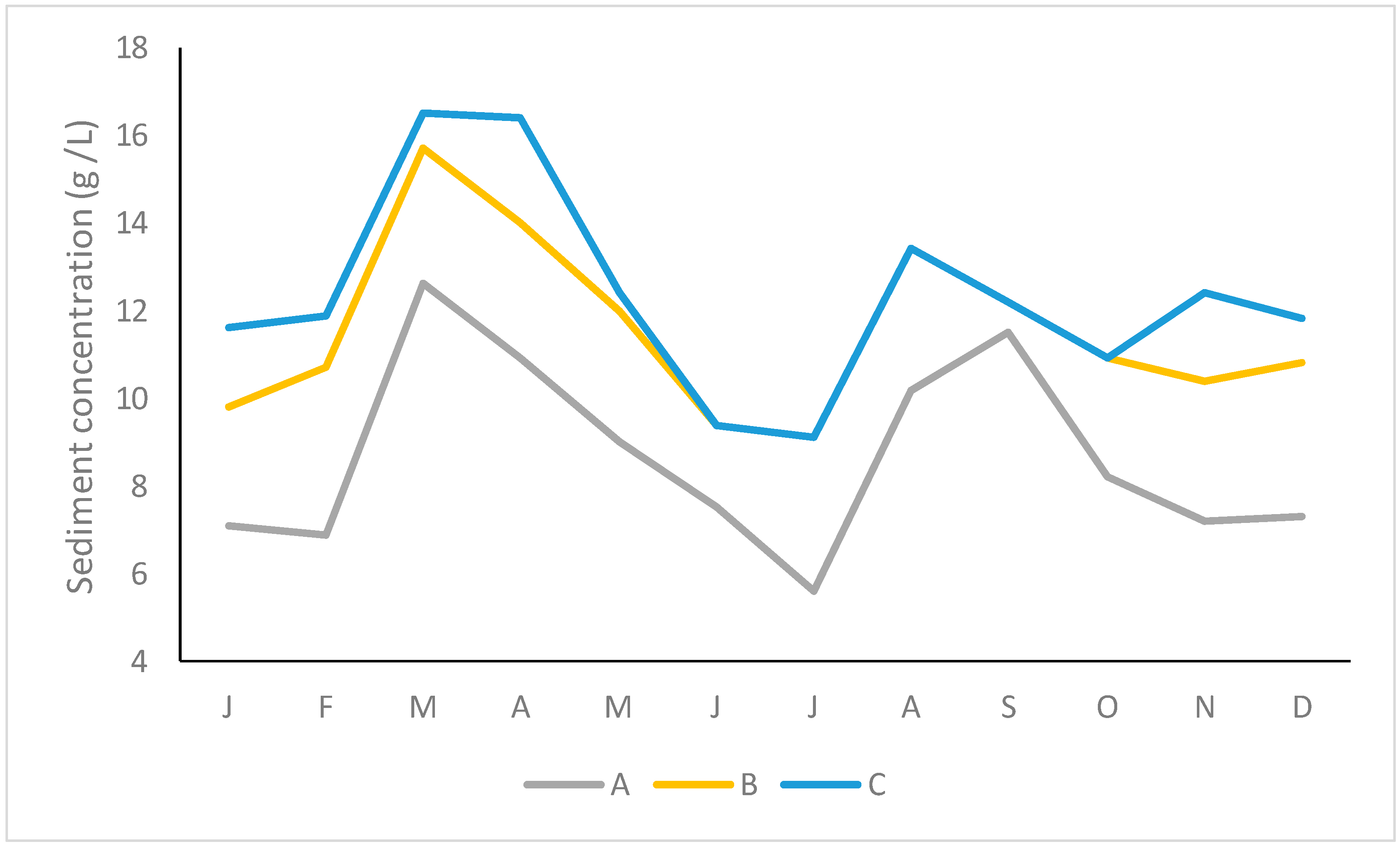
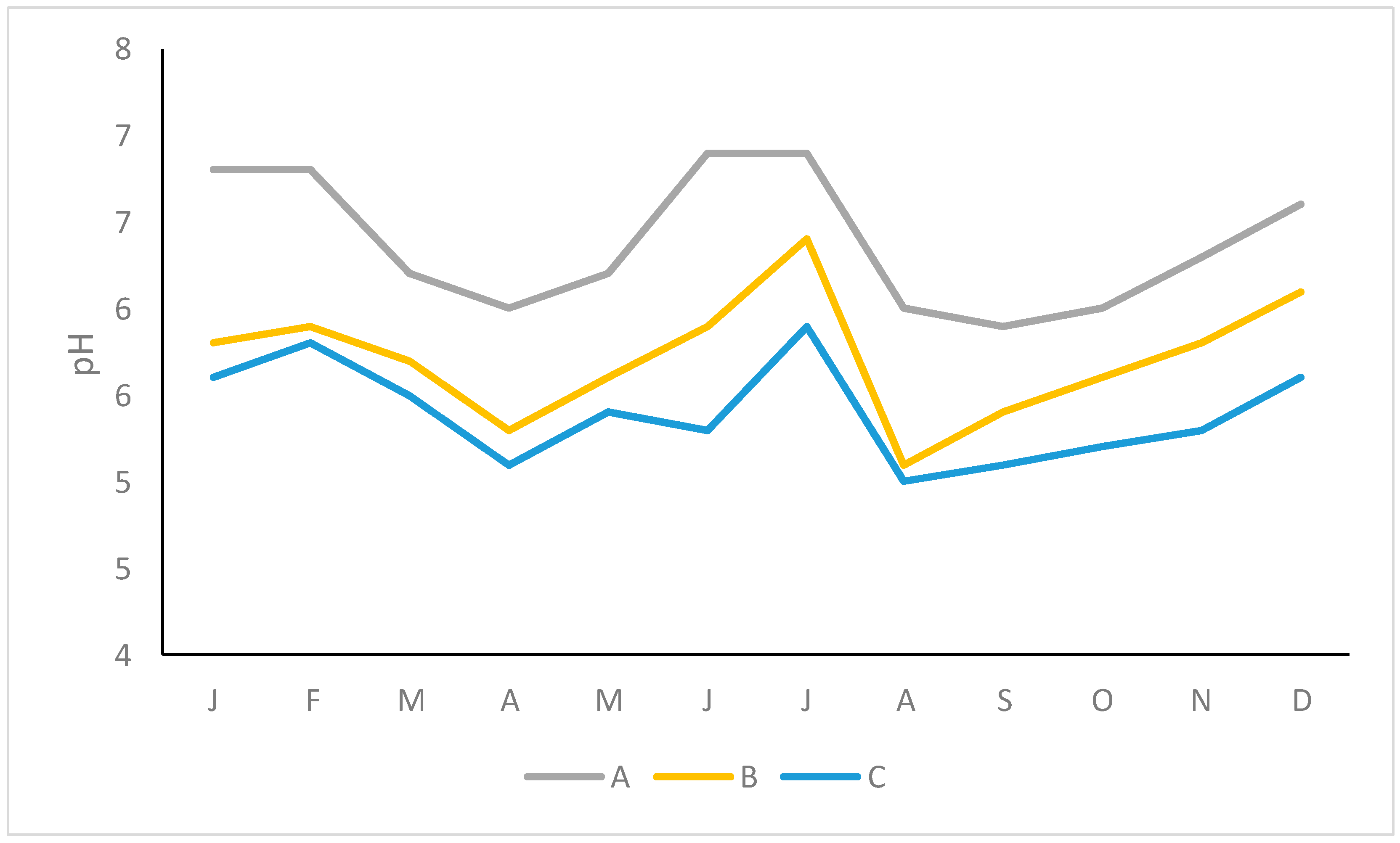
| Year | Urban (No of Inhabitants) | % of the Total Population | Rural (No of Inhabitants) | % of the Total Population | Total (No of Inhabitants) |
|---|---|---|---|---|---|
| 1970 | 15,827 | 43.3 | 20,705 | 56.7 | 36,532 |
| 1980 | 22,781 | 53.9 | 19,446 | 46.1 | 42,227 |
| 1990 | 31,278 | 65.4 | 16,576 | 34.6 | 47,854 |
| 2000 | 39,306 | 75.1 | 13,046 | 24.9 | 52,352 |
| 2010 | 44,932 | 79.3 | 11,275 | 20.1 | 56,207 |
Publisher’s Note: MDPI stays neutral with regard to jurisdictional claims in published maps and institutional affiliations. |
© 2021 by the authors. Licensee MDPI, Basel, Switzerland. This article is an open access article distributed under the terms and conditions of the Creative Commons Attribution (CC BY) license (http://creativecommons.org/licenses/by/4.0/).
Share and Cite
Antoneli, V.; Pulido-Fernández, M.; Bednarz, J.A.; Brandes, L.; Vrahnakis, M.; Kazoglou, Y.; Lozano-Parra, J.; García-Marín, R. Changes in Water Quality of the River das Antas as It Passes through Rural and Urban Areas. Urban Sci. 2021, 5, 22. https://doi.org/10.3390/urbansci5010022
Antoneli V, Pulido-Fernández M, Bednarz JA, Brandes L, Vrahnakis M, Kazoglou Y, Lozano-Parra J, García-Marín R. Changes in Water Quality of the River das Antas as It Passes through Rural and Urban Areas. Urban Science. 2021; 5(1):22. https://doi.org/10.3390/urbansci5010022
Chicago/Turabian StyleAntoneli, Valdemir, Manuel Pulido-Fernández, João Anésio Bednarz, Leonardo Brandes, Michael Vrahnakis, Yannis Kazoglou, Javier Lozano-Parra, and Ramón García-Marín. 2021. "Changes in Water Quality of the River das Antas as It Passes through Rural and Urban Areas" Urban Science 5, no. 1: 22. https://doi.org/10.3390/urbansci5010022
APA StyleAntoneli, V., Pulido-Fernández, M., Bednarz, J. A., Brandes, L., Vrahnakis, M., Kazoglou, Y., Lozano-Parra, J., & García-Marín, R. (2021). Changes in Water Quality of the River das Antas as It Passes through Rural and Urban Areas. Urban Science, 5(1), 22. https://doi.org/10.3390/urbansci5010022







_Kazoglou.png)



